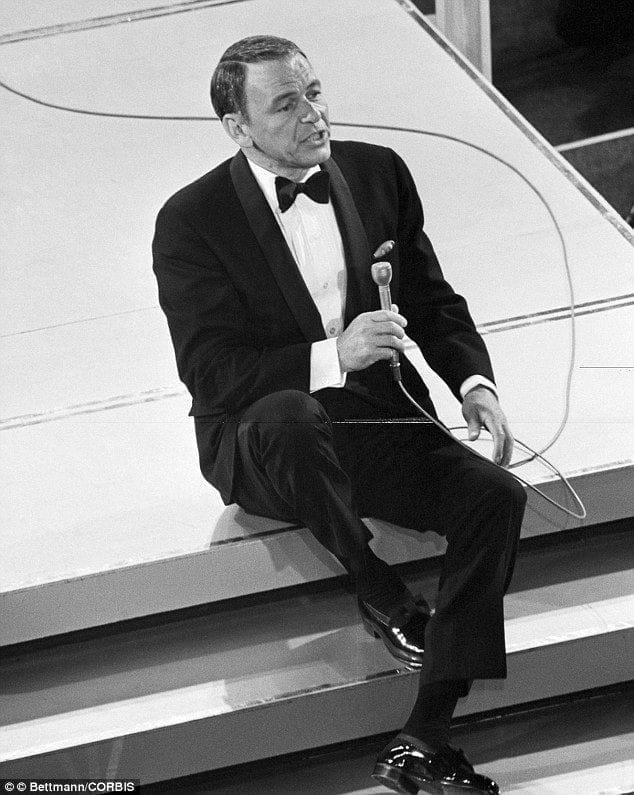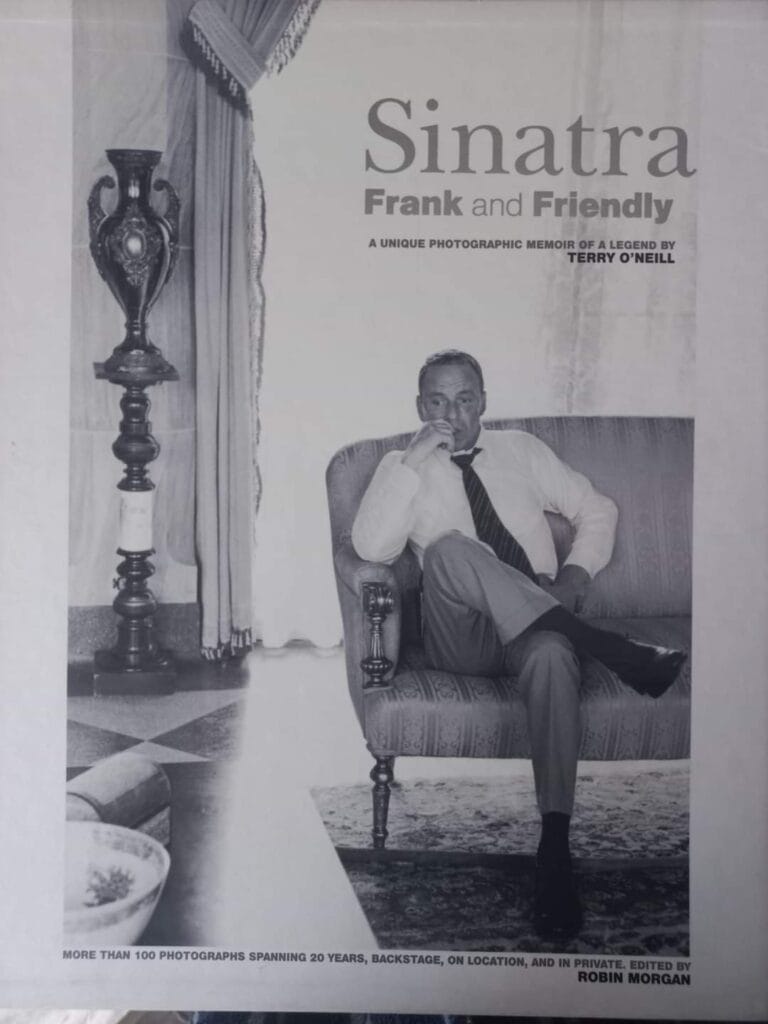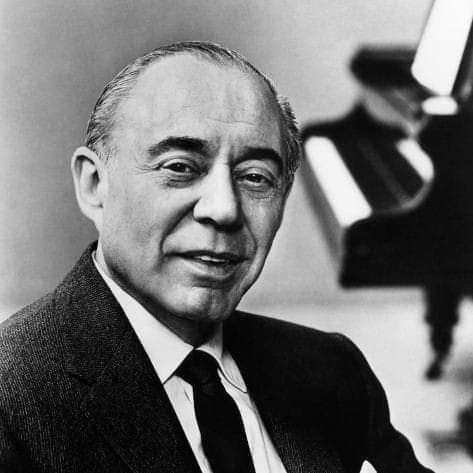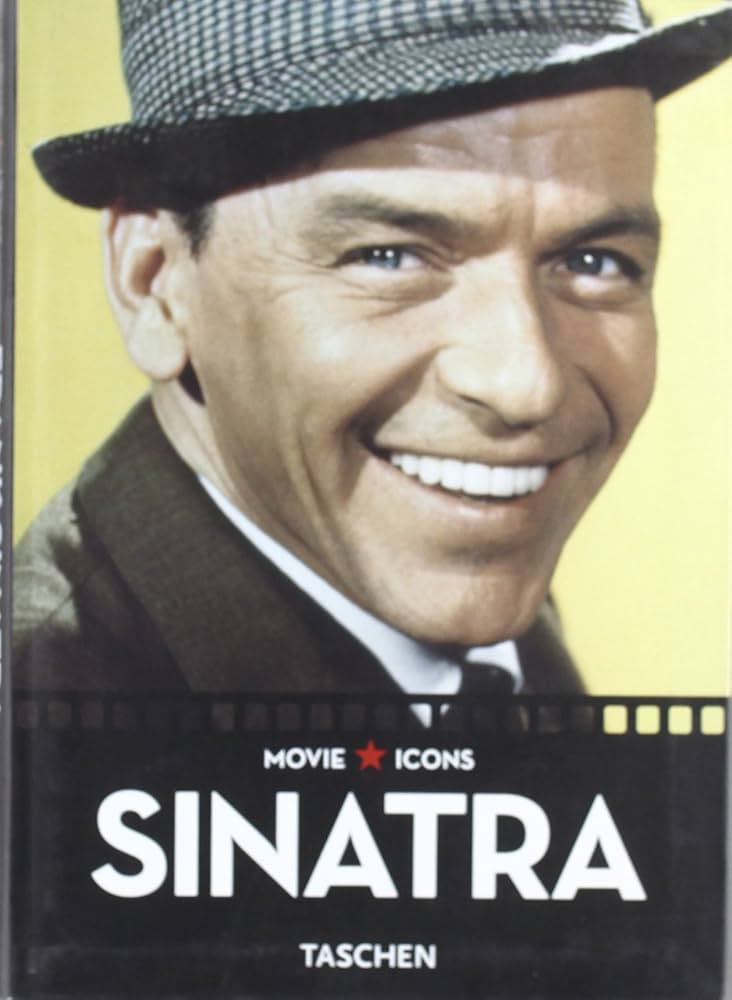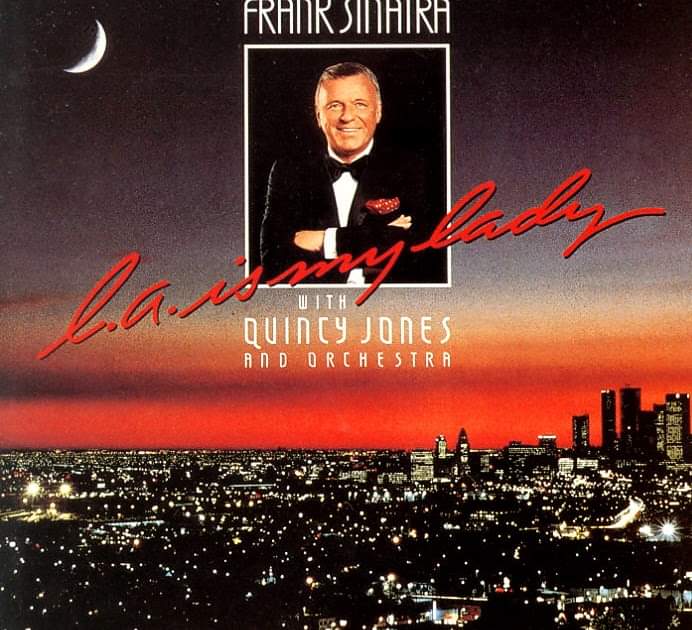
“L.A. IS MY LADY”-ANALYSIS AND REVIEW OF THE ORIGINAL ALBUM.
BACKGROUND
In 1983, for Quincy Jones any dream is possible. The previous year he had produced the album “Thriller” for Michael Jackson and now he wants to unite Frank Sinatra and Lena Horne, two of the brightest stars of the swing era, in a project. Doing things in a big way doesn’t come from now; Two decades earlier he had directed Sinatra and Count Basie on a pair of the best jazz albums in history: “It Might As Well Be Swing” (1964) and “Sinatra At The Sands” (1966).
Citing Frank and Lena on an album of duets would have already been a superb contribution to music, but Jones lets himself be carried away by his inexhaustible enthusiasm and projects a multi-disc album in a deluxe edition, something like the definitive monument to the Great American Songbook. He manages to recruit an orchestra that includes George Benson, Dizzy Gillespie, Herbie Hancock and Toots Thielemans. Contact Lionel Richie to compose some original songs and Michael Jackson to accompany the protagonists in a song. Even Steven Spielberg is involved in the project. For all this, a studio is reserved for a week. If “Thriller” caused shivers throughout the world, this work promises to dislodge jaws of all colors.
But misfortune is recreated with the project; The unexpected death of Don Costa, Frank’s arranger and personal friend, causes the first suspension on the roadmap. Later, it will be Lena who suffers health problems, and the coup de grace will be given by Frank’s own commitments in Atlantic City and Las Vegas. The heat that drove the album is dissipating and what could have been Sinatra’s most ambitious and spectacular work and one of the milestones of the decade is reduced to a beautiful dream. (1)
Quincy did not want to miss the opportunity to work with Frank again, and in 1984 he proposed to record an LP with the legendary drummer Buddy Rich, which would be published on Qwest, Quincy’s label. The repertoire is chosen and everything seems to be going smoothly, but a few weeks before recording begins, Rich abruptly abandons the project. Quincy, unresponsive to discouragement, will lay, with the remains of both “shipwrecks”, the foundations of “L.A. Is My Lady.”
PRODUCTION AND RECORDING
Lacking enough new material that Sinatra liked, he chose to choose old standards that he had not sung before and remake songs in a completely new style.
To dress the repertoire with the most appropriate arrangements, Jones recruits two of his colleagues in Count Basie’s band, Frank Foster and Sam Nestico, as well as pianist and composer Torrie Zito. Helping him with the recording and mixing tasks is Phil Ramone, who had established a solid reputation as a producer of successful records. Ramone wanted to work with Sinatra again so much that he told Quincy to give him any job to get on the project, including testing the microphones or cleaning the floor. (2)
Musicians have to live up to such a grandiose plan, and Quincy calls on the biggest names in New York, mainly veterans of the bands of Count Basie, Lionel Hampton, Woody Herman and Benny Goodman, as well as several artists who enjoy a prosperous solo career, like Randy and Michael Brecker and George Benson, forming one of the best bands to have supported Sinatra throughout his career. (3)
The studio in which the album is recorded is located on the seventh floor of a building located on 52nd Street in New York. Ramone bought the studio from Columbia Records in 1967 and had built a very unique vocal recording booth for one of Sinatra’s sessions for the album “The World We Knew”; It is a kind of twelve-meter stage, with the back wall covered in fabric to achieve the appropriate reverberation. The cabin is open and has large sliding doors, so the singer has plenty of space, enough to accommodate a piano and a small sofa. At one point during the recording, Sinatra comments wistfully that the studio is one of the first he recorded in, more than forty years ago.
Quincy senses that it will be a historic moment and wants to have a film crew. Cameras are installed throughout the studio, including at the entrance of the building to record Frank’s arrival. Two hours of recordings are recorded, of which sixty minutes will be included in a video titled “Portrait Of An Album”, directed by Emil G. Davidson. The importance of the event is confirmed by the fact that Michael Jackson himself comes to the studio. Frank talks to the King of Pop, takes some photos with him and asks for an autograph for his granddaughter.
THE RECORDING SESSIONS
The recording sessions are very productive, and the album is completed in just four days, on April 13, 16 and 17 in New York and on May 17 in Los Angeles. Anyone who has worked with Frank knows that everything has to be ready when he arrives at the studio. Sinatra likes to record quickly and live, with the entire orchestra in the studio. “When we recorded in New York, I called the orchestra three hours beforehand.” – Quincy recalls – “We rehearsed and made all the adjustments. He arrived at seven o’clock sharp and, God help me, he went home at eight twenty-eight. We had finished four songs. The musicians, when they saw how fast he recorded, went crazy. But I knew, after having worked with him, that the best thing is to have everything ready (…) They can’t keep up with him.”
“It’s a very rare thing nowadays to have everyone in the studio at the same time, especially the singer and the rhythm section.” – Quincy comments in the “Portrait Of An Album” video – “Now everything is done in parts, You arrive and the first thing you do is put on the drum machine, and that takes up the whole day. Then you add the bass and guitar, then the piano, winds and strings. Next, the singer is sent and then the backup singers. That can take you three months, and no one meets with the other musicians.”
REPERTOIRE
L.A. IS MY LADY
This song, composed in 1984 by Quincy Jones, his wife Peggy Lipton Jones and the composer couple Alan and Marilyn Bergman, was conceived for an event at the Los Angeles mayor’s office. Jones claims that it was not he who gave the song to Sinatra, but that the singer must have heard it somehow and called him to suggest that they could use it as the title track for the new album, replicating the formula that gave such good results in the past. with “Strangers In The Night” (1966) or “My Way” (1969).
This declaration of love to the city of Los Angeles is the only concession that Sinatra made to the characteristic synthetic sound of 80s pop and it is strange when listening to it for the first time, due to its bold arrangement, a mix of disco textures and jazz tradition, signed by Dave Matthews, Quincy Jones, Jerry Hey and Torrie Zito; However, the enthusiasm that Frank brings to the performance manages to win over the listener. The closing of the song, in the style of “New York, New York”, suggests that Quincy and Frank hoped that this song would be as emblematic for Los Angeles as Fred Ebb and John Kander’s song was for the Big Apple, but that never happened. . Although a video clip full of music stars (David Lee Roth, Eddie Van Halen, Donna Summer, Michael McDonald, Dean Martin, La Toya Jackson, Nancy Sinatra, James Ingram) was filmed and Frank included the song in many of their concerts of the time, the single that was released (with “Until The Real Thing Comes Along” on side B) failed to enter the Billboard charts.
THE BEST OF EVERYTHING
Fred Ebb and John Kander, authors of “(Theme From) New York, New York” wrote the piece expressly for this album. It is probably the weakest point of the album, since neither the melody nor the lyrics are particularly memorable. The orchestral arrangements, where Frank Wess’s sax solo stands out, are by Joe Parnello, who worked with Frank for several years in the studio and in concert. It is a song in which the singer wishes his listener all the best that life can give him.
HOW DO YOU KEEP THE MUSIC PLAYING?
It is a song composed in 1982 by Michel Legrand, Alan Bergman and Marilyn Bergman for the soundtrack of the film “Best Friends”, starring Burt Reynolds and Goldie Hawn. The song was played in the film with the voices of James Ingram and Patti Austin and was nominated for the award for best original song at the fifty-fifth edition of the Oscars, but lost in favor of “Up Where We Belong” from the film “An officer and a gentleman”, sung by Joe Cocker and Jennifer Warnes.
The original song is a dialogue between two young lovers who wonder how to keep the flame of their love burning as time passes. It became quite popular with vocalists and covers have been recorded by Celine Dion, Johnny Mathis, Barbra Streisand, Shirley Bassey and Tony Bennett.
Sinatra’s version transforms the nature of the original. In the voice of a sixty-eight year old man, the hopeful question becomes a bitter and resigned affirmation of the havoc that time wreaks on human beings and what they love.
TEACH ME TONIGHT
Composed in 1953 by Gene De Paul and Sammy Cahn and premiered by Janet Brace. The most successful version was by the female vocal group The De Castro Sisters in 1954.
It is a courtship song in which the vocalist asks his lover to teach him all the secrets of the lovemaking arts. Frank obviously has plenty of experience in this subject, and uses this song to offer an ironic and mischievous interpretation, supported by some modifications in the lyrics by Sammy Cahn (“I’ve done love scenes in one or two movies, and I’ve known to one or two girls”) and a very sexy orchestration by Torrie Zito.
IT’S ALL RIGHT WITH ME
Written in 1953 by Cole Porter for the musical “Can Can”. In the play, the theme is performed by Peter Cookson. In its seventy years of life it has had more than five hundred versions, including those by Sammy Davis Jr., Lena Horne, Ella Fitzgerald, Sony Rollins and Michel Legrand.
It is another courtship song in which the singer compares the physical charms of the woman before him with those of another whom he is trying to forget.
Frank had already recorded it on February 19, 1960 as an intense and seductive song orchestrated by Nelson Riddle, as part of the soundtrack of the film adaptation of “Can Can”. In the new version, with arrangements by Sam Nestico, the song becomes a very fast and aggressive swing in which the singer seems to urge the object of his desire to consummate the sexual act. Much attention to George Benson’s atomic guitar solo.
MACK THE KNIFE
The origin of this classic is found in an old German song titled “Moritat von Mackie Messer”, composed in 1928 by Kurt Weill and Bertolt Brecht for the opera “Die Dreigroschenoper”. In the play she was played by Kurt Gerron.
In 1955 it was recorded by Louis Armstrong, in an English version by Marc Blitzstein. But it was not until 1959, with Bobby Darin‘s version, that the song became a standard. Darin went to number one on both sides of the Atlantic and won two Grammys, and Ella Fitzgerald also won a Grammy for her extraordinary live performance in 1961.
It is Quincy who proposes to record the song, but at first Frank is reluctant, given the illustrious versions that precede it. Quincy insists and commissions Frank Foster to write a distinctive arrangement. Foster brings a Count Basie-inspired swing, which kicks off with Major “Mule” Holley‘s irresistible growl accompanying the bass line. Frank sings the song with elegance and at times it seems as if he were Mackie himself. As the intensity rises with each verse, Sinatra raises the octane of his performance. The singer shares with the listener the doubts that assailed him at the beginning (“Oh, “Satchmo” Louis Armstrong, Bobby Darin did this song well, Lady Ella too, they sang it with so much feeling that the blue-eyed old man can’t add anything new.” ) to then immediately acknowledge that thanks to the musicians present he will be able to take the song to a new level, and he even laughs at himself and the gangster fame he has carried for decades, reciting Marlon Brando‘s legendary phrase in “ The Godfather” (“But with Quincy’s big band right behind me, swinging hard, Jack, I know I can’t lose, when I tell you all about Razor Mack, it’s an offer you can’t refuse.”)
This is the only song on the album that Frank kept in concerts until the end of his career. (4)
UNTIL THE REAL THING COMES ALONG
Sammy Cahn, Saul Chaplin and Slim Freeman recorded this song in 1936, but its origin must be sought in 1931, in a piece with a similar title, “Till The Real Thing Comes Along”, composed by Alberta Nichols and Mann Holiner. The first recording belongs to Andy Kirk and his Twelve Clouds Of Joy and is dated 1936. Over the years there have been sung and instrumental versions by artists such as Billie Holiday, Oscar Peterson, Jackie Gleason, Dean Martin, Ella Fitzgerald, Dexter Gordon and Aretha Franklin.
The song is an enumeration of everything the singer is willing to do for a woman to show her his love, adding that “if this is not love, it will have to serve until the real one arrives.” For Sinatra’s version, Sammy Cahn wrote some new paragraphs to make it more current and friendly, for example, mentioning the character of Mister T, very popular at the time. The very sensual arrangement is the work of Sam Nestico, and perfectly supports Frank’s interpretation, who opts for a delicious ironic tone.
STORMY WEATHER
This classic with capital letters was born in 1933 by Harold Arlen and Ted Koehler. It debuted in the voice of singer Ethel Waters, who performed it live at the legendary Cotton Club. It is estimated that there are almost six hundred versions, including the sung ones, the instrumental ones and the adaptations to different languages. Some of the most illustrious interpreters of this hymn are The Golden Gate Quartet, Ella Fitzgerald, Peggy Lee, Billie Holiday, Louis Armstrong or Lena Horne, who made it one of the emblems of her repertoire; In fact, it is one of the songs that were considered for Frank and Lena’s ill-fated joint album.
The song is the lament of a person with a broken heart due to the absence of a loved one; The abandonment leaves him with the unpleasant sensation of living in a permanent stormy climate.
Sinatra had recorded the song twice, the first on December 3, 1944, with arrangements by Axel Stordahl, and on March 24, 1959, with orchestration by Gordon Jenkins, giving both the helpless tone that the story requires. For the 1984 version, Sam Nestico devised a blues arrangement, and Frank’s interpretation aligns with that style. The result is magnificent, the reading is not as gloomy as its predecessors, but it does not skimp on viscerality either. (5)
IF I SHOULD LOSE YOU
Composed in 1935 by Leo Robin and Ralph Rainger for the film “Rose Of The Rancho”, starring John Boles and Gladys Swarthout, who performed it for the first time. There are more than four hundred recorded versions, often in a woman’s voice, including those by Dinah Washington, Julie London, Keely Smith and Peggy Lee; As a curiosity, it is worth mentioning that Lee recorded his version for the album “The Man I Love” (1957), in which the orchestra was conducted by Frank Sinatra.
It is a melodramatic ballad in which the singer describes a series of misfortunes that would happen if he lost his loved one. Sinatra’s interpretation, supported by Sam Nestico’s spectacular arrangement, turns it into a dark strategy of seduction through verbiage.
A HUNDRED YEARS FROM TODAY
This piece, created in 1933 by Victor Young, Ned Washington and Joe Young for the musical “Blackbirds of 1933”, and premiered by Katherine Perry, has been recorded by many great voices, including Doris Day, Dean Martin, and Rosemary Clooney.
The lyrics are an invitation not to spare affection, and to enjoy the simple pleasures of life, because as the wise Spanish proverb says, “in a hundred years, everyone will be bald.”
Although he had never immortalized it in the studio before, Frank had sung it on the radio in the ’50s; There is a recording dated November 17, 1953, with the accompaniment of a jazz quartet, broadcast on the NBC program “To Be Perfectly Frank” and published in 2015 in the compilation “A Voice On Air”.
Again Sam Nestico signs the arrangement, which includes a magnificent trombone solo by Urbie Green. Frank offers a relaxed read, as if it were the advice of a wise old man to someone young and inexperienced.
AFTER YOU’VE GONE
It is an old lament of heartbreak composed in 1918 by Henry Creamer and Turner Layton. Over time it became a standard with almost a thousand versions of all kinds, highlighting Bessie Smith‘s approach to blues, the more syncopated reading of Guy Lombardo and his Royal Canadians and the frenetic and hilarious instrumental adaptation by Gene Krupa.
For Sinatra’s version, Frank Foster adds new details to the lyrics and crafts an exciting swing arrangement that leaves room for excellent solos from George Benson’s guitar and Lionel Hampton’s vibraphone. The rousing rhythm and Frank’s relaxed, ironic performance make for a high-octane cocktail that goes to your head in the final part, with those deliriously high notes of the trumpet and Sinatra’s voice.
LAUNCH AND PERFORMANCE
The presentation of the album is very attractive, with the image of the Los Angeles skyline at dusk and above it, a studio photo of Sinatra sporting an impeccable tuxedo and a dazzling smile. In the inner folder of the album there are photographs of the Voice and several of the musicians at work. Also included are the lyrics of the songs and a formidable text by Stan Cornyn that masterfully describes the atmosphere that prevails during the recording sessions.
The album hit the charts on August 25, 1984 and stayed there for thirteen weeks, peaking at number fifty-eight. In the United Kingdom it spent less time on the charts – eight weeks – but reached a better place – forty-one.
Two single albums were published; one with the songs “Mack The Knife” and “It’s All Right With Me” and another with “L.A. Is My Lady” and “Until The Real Thing Comes Along.” None found entry to the lists.
CODA
“L.A. Is My Lady” has great historical importance since it was Frank Sinatra’s last mainstream album. The “Duets” of 1993 and 1994 are works of a totally different nature. Each of the cuts from “L.A. Is My Lady” is imbued with a happy energy that transcends the layers that time and space have deposited and touches the soul of the listener. All those involved lived those April days as a party in homage to Sinatra’s legacy, and even more so, to a sound and a way of shaping music that was inevitably becoming extinct. Giving space to the solos of some of the band’s most relevant musicians, Quincy Jones gave the album a choral character that most of Frank’s albums do not have, and with it a unique personality. But the most important thing about an album is its musical value, and in that sense this album has a lot to offer. The repertoire, signed almost entirely by notables from the Great American Songbook, is a worthy continuator of the tradition on which the best of Sinatra’s discography is based, and the classic, but unorthodox, orchestral arrangements can easily withstand the comparison with what was previously done by Nelson Riddle or Billy May. And Sinatra? It is indisputable that time stole the softness from his voice. But it is just as true that on this album Frank sings magnificently, reaching very high notes and taking full advantage of the nuances that old age imposed on his vocal cords.
With the album just released and his heart elated, Sinatra stated:
“I would like to record again. When we do it, I think I’ll probably look up what we just did, and we’ll do another one like that. We will thoroughly search for songs that may be quite old, songs that I have forgotten and perhaps, certainly, songs that today’s youth have never heard. We can give the songs a new dress. I have several pending appointments with Quincy, we will go over it, make a list of titles. “I think we will take about fifty and we will keep the ten that we like the most.”
Unfortunately, after recording this album, Frank lost interest in recording albums. Although his main motivation was artistic creation, commercial success was very important to him, and the truth is that he had not had a record among the twenty best-selling albums in the United States for fifteen years. Quincy Jones, Charles Calello and Frank Junior urged him on numerous occasions to enter the studio again, but Sinatra always excused himself by saying that he no longer sang as well as before. Between 1986 and 1991 Frank recorded several single songs, but with no plans to complete a new full-length album.
GRADES
- (1) Frank Sinatra and Lena Horne were close friends for years, but the marital separation between Horne and her husband, composer and arranger Lennie Hayton, distanced the singers, as Hayton was one of Sinatra’s dearest friends. Frank publicly criticized Horne for years, which raises doubts that the two were eager to work together on this project.
- (2) Frank Benjamin Foster III (1928-2011), tenor and soprano saxophonist, flutist, arranger and composer. He was in the Count Basie Orchestra between 1953 and 1995 and received two Grammy Awards for his arrangements in 1987 and 1988. Sammy Nestico (Born Samuel Luigi Nistico, 1924-2021) wrote his first arrangement at the age of 15 and was the arranger of the United States Marine Band. He joined the Count Basie Orchestra in 1967. Throughout his career he arranged for Phil Collins, Barbra Streisand, Michael Bublé, Natalie Cole, Sarah Vaughan and Bing Crosby. Torrie Zito (1933-2009), Italian-American pianist and arranger who had written two arrangements for Sinatra in 1965, “Everybody Has The Right To Be Wrong” and “I’ll Only Miss Her When I Think Of Her,” frequently worked with Tony Bennett and is famous in popular culture for being the string arranger on John Lennon’s “Imagine” album. Phil Ramone (born Philip Rabinowitz, 1934-2013), founded the A&R Recording studio with his partner Jack Arnold in 1958. He worked with artists such as Burt Bacharach, Bono, Ray Charles, Celine Dion, Bob Dylan, Gloria Estefan, Aretha Franklin, Elton John, BB King, Madonna, Paul McCartney, George Michael, Luciano Pavarotti, Paul Simon, Rod Stewart and Stevie Wonder. He had worked with Sinatra on the album “The World We Knew” (1967)
- (3) George Benson (1943) is a guitarist, singer and songwriter who began performing in childhood. His album “Breezin’ ” went triple platinum and reached the top of the Billboard charts in 1976. He has ten Grammy Awards and a star on the Hollywood Walk of Fame. The duo Brecker Brothers appeared in 1974. It was made up of twins Michael (saxophone, flute and EWI) and Randy (trumpet and flugelhorn). Randy became famous for having been part of the group Blood, Sweat and Tears. In addition to performing and recording together, they worked as studio musicians for other artists, including Bruce Springsteen (“Born To Run”, 1975) and Frank Zappa (“Zappa In New York”, 1976). The group disbanded with Michael’s death from leukemia in 2007. Randy is still active.
- (4) After polishing the song live for a couple of years, Frank thought he was doing much better, and recorded a new vocal track on October 30, 1986, which was released on the CD edition of the album. This second reading shows us a much more confident Sinatra and immersed in the role, and finishes the song with the classic finale “You better close the door and call the authorities, because Mackie, that slacker, has returned to town. ”
- (5) The take chosen for publication on the album was recorded in Los Angeles on May 17, 1984. It had been recorded a month before in New York, but on that occasion a higher tone was used with which Frank did not agree. I found it comfortable. According to Quincy Jones, Sinatra called him early one day to tell him he wanted to remake it. In Phil Ramone’s opinion, the first version was better than the final version.
Article written by Mahnuel Muñoz.
Access the Complete Discography of Frank Sinatra in the following link of Sinatra Radio 24h https://sinatraradio24h.com/category/discography/
We remind you that you can also listen to Sinatra Radio 24 hours on your mobile phone by downloading our free applications for Android in the Play Store https://play.google.com/store/apps/details?id=sinatra.radio24h, and free applications for iOS in the Apple Store https://apps.apple.com/app/sinatra-radio-24h/id6599859344

